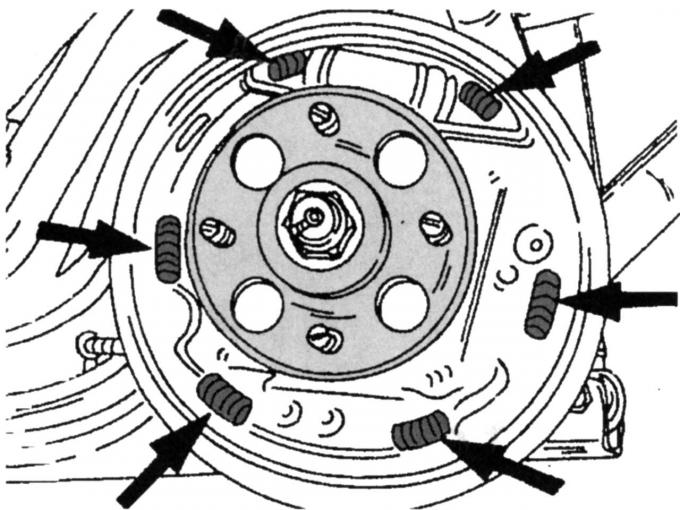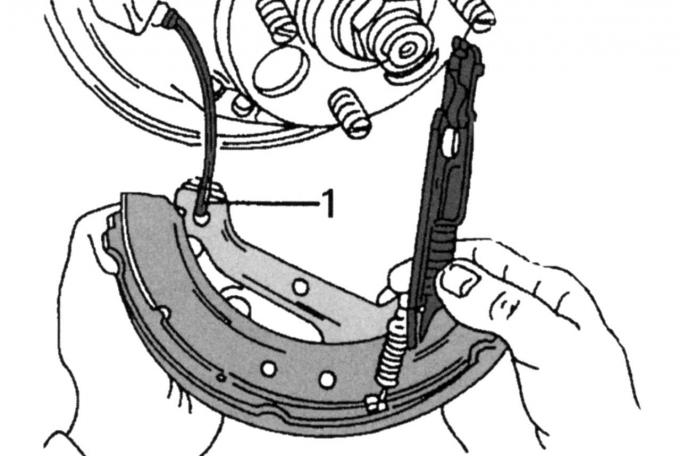
Pic. 260. Lubrication points with composition for heated bearings
- lightly lubricate with the composition for heated bearings indicated in fig. 260 brake pad contact points;
- lubricate the rotation points and threads of the adjusting pusher with the same lubricant;
- if the pads are replaced, then a new rear pad is supplied with a lever for the parking brake, which is riveted on the pad, lubricate the hinge points well before installing the pads, remove excess grease;

Pic. 261. Installing the brake shoe: 1 — parking brake cable
- set the pressure bar with the regulator to passive (wrung out) brake shoe and attach cable 1 (pic. 261) parking brake to the lever, as shown in the figure;
- when installing the brake shoes, install the return springs in the shoes according to their original position and place the shoes on the brake shield plate;
- insert the ends of the block into the supports on the back side;
- carefully insert the other end of the pad into the piston slot with a screwdriver (first remove the rubber strip), while trying not to damage the protective plug of the cylinder;
- Center the brake pads on the brake shield plate;
- install the anchor pins, for which press the pin from behind, compress and insert the spring and turn the pin head 90º to protect the part;
- Establish a brake drum; if the drum does not fit, then bring the self-regulator through the gearing to bring the pads together, to do this, put a screwdriver on the adjusting element and hit it with your palm;
- make a test drive: brake the car several times so that the mechanism runs in, and then apply the parking brake. In this case, clicking sounds may appear in the brakes, which indicate self-adjusting the brakes. If the sounds no longer appear, the brakes are adjusted properly.
Visitor comments